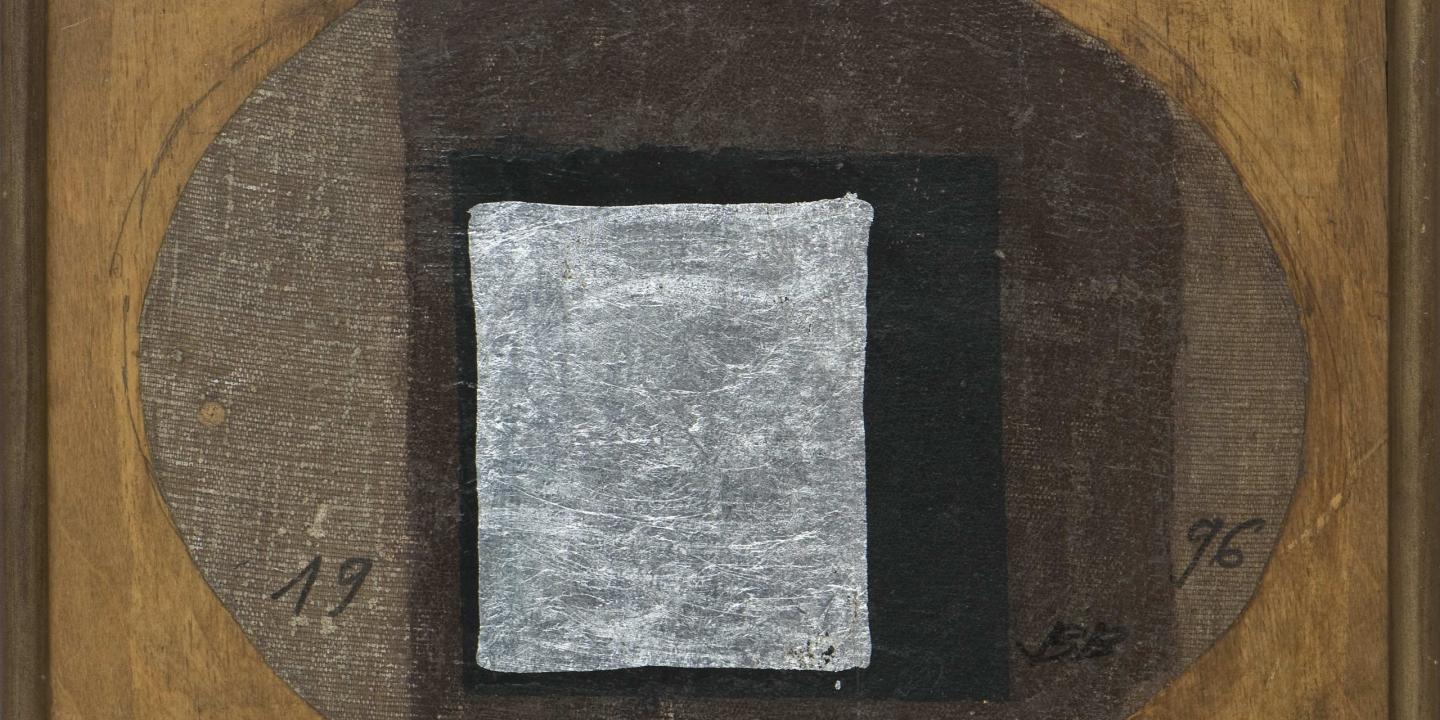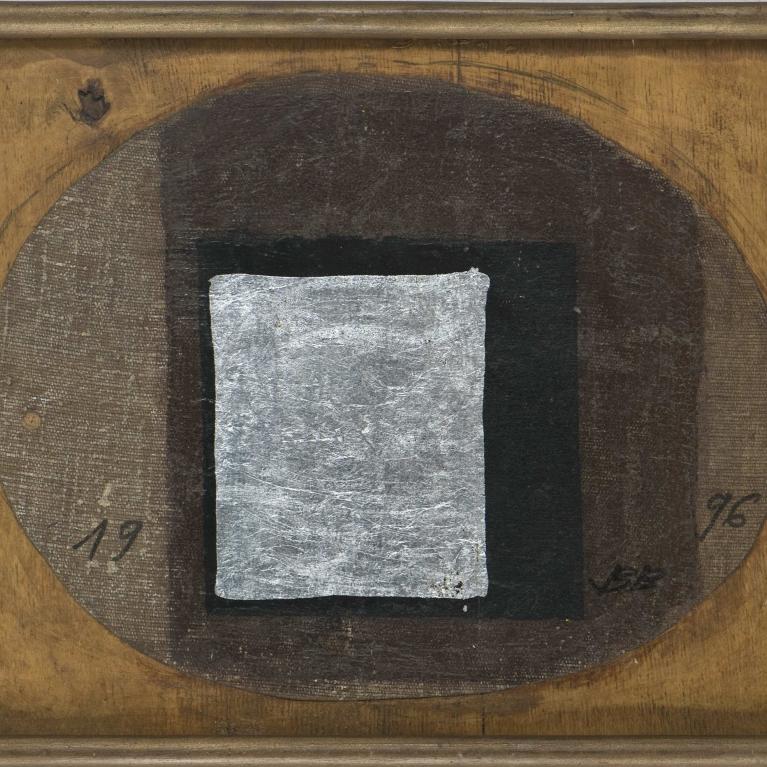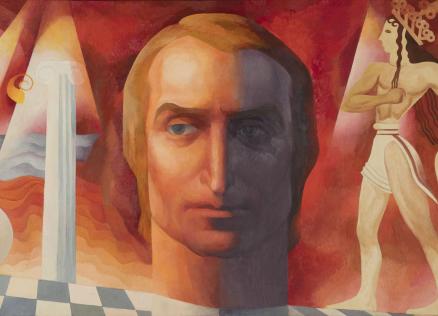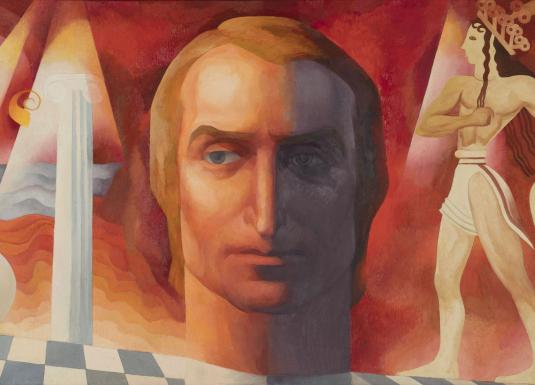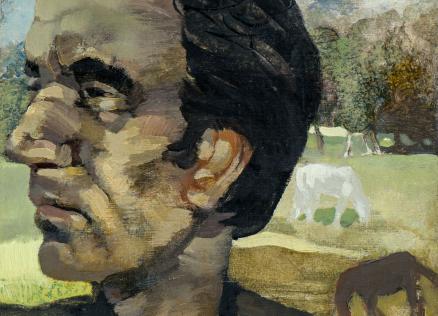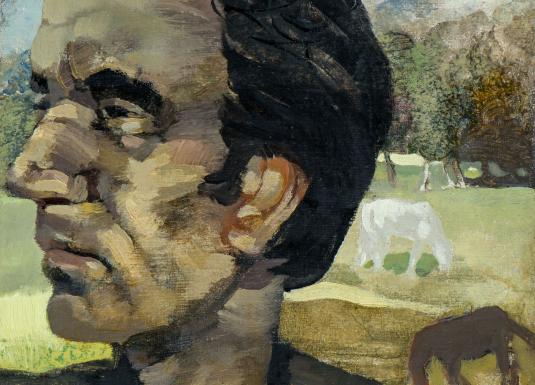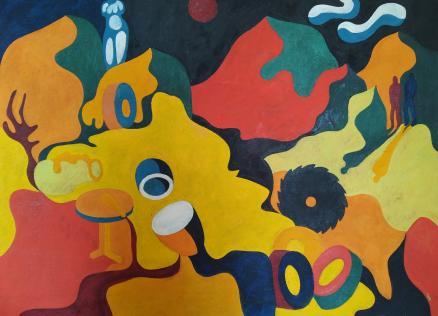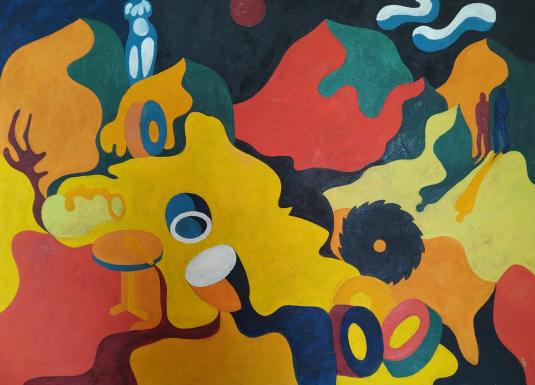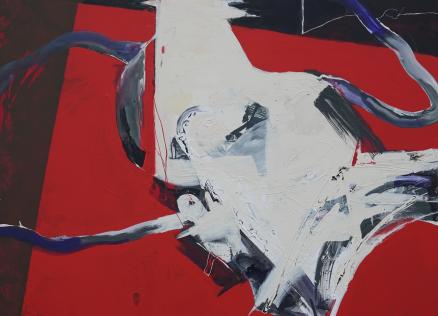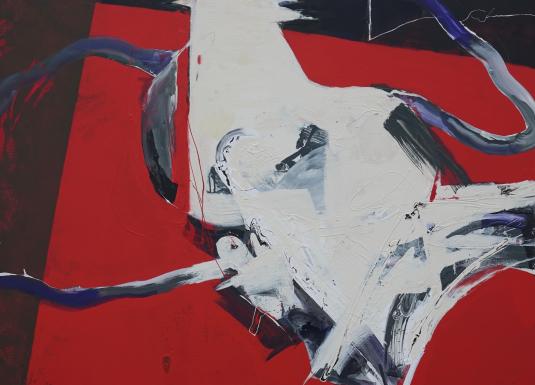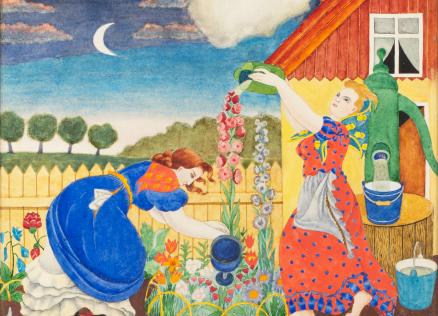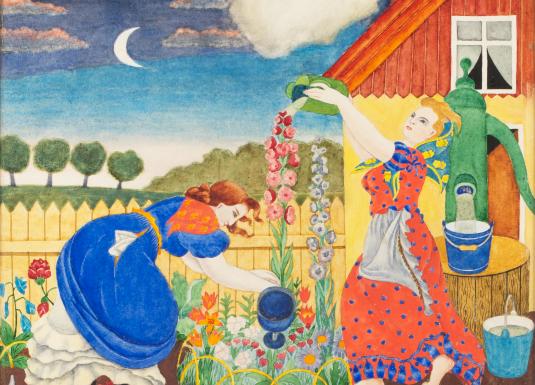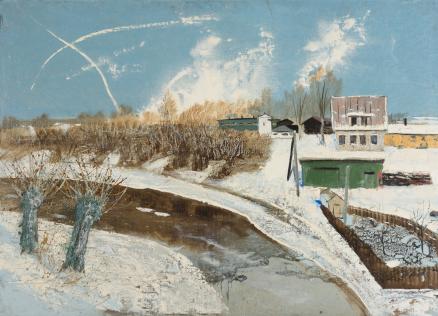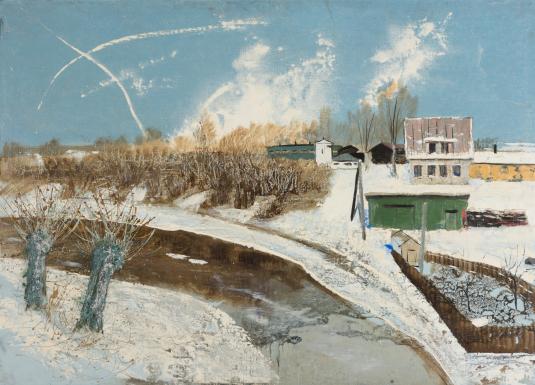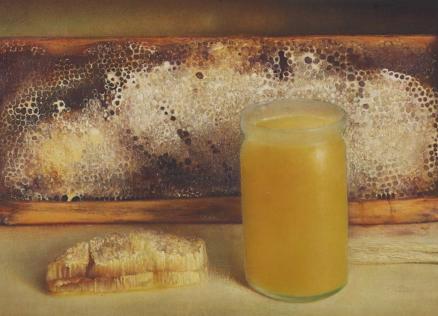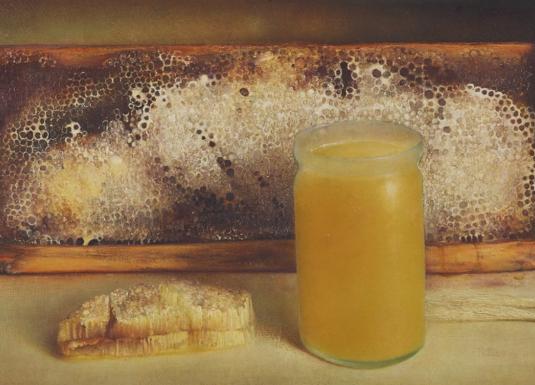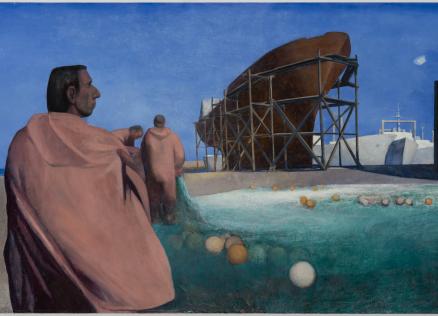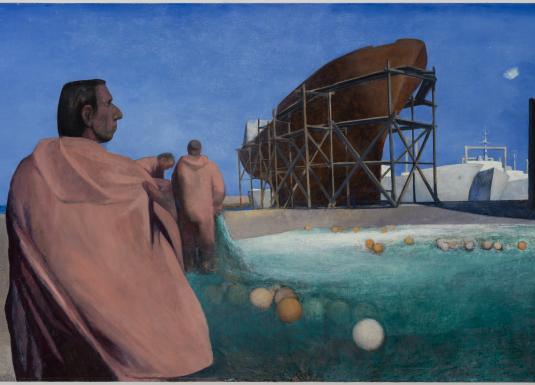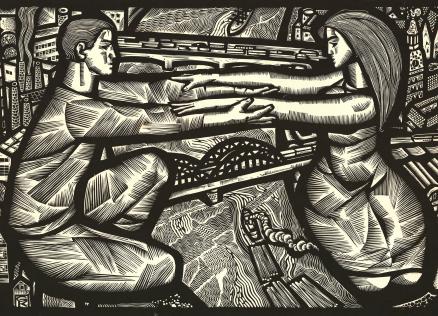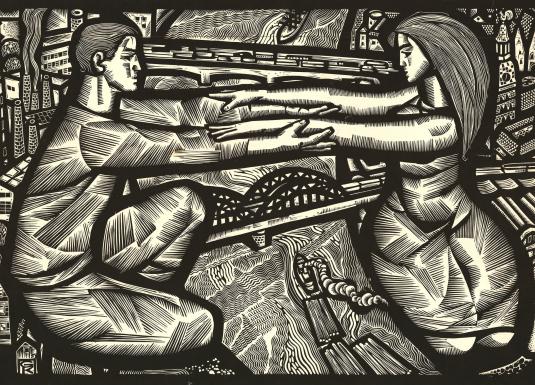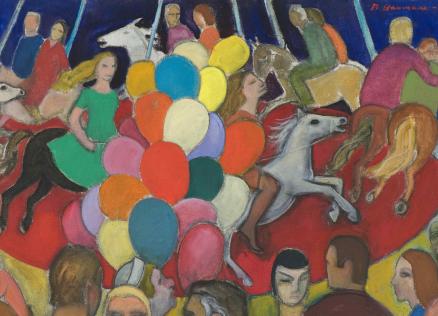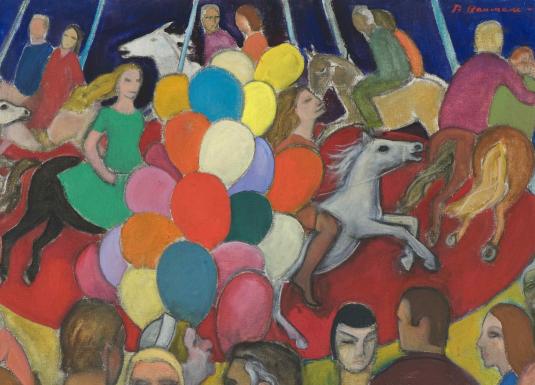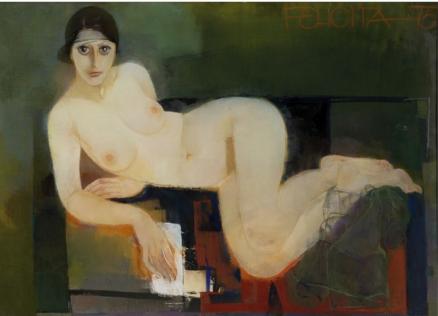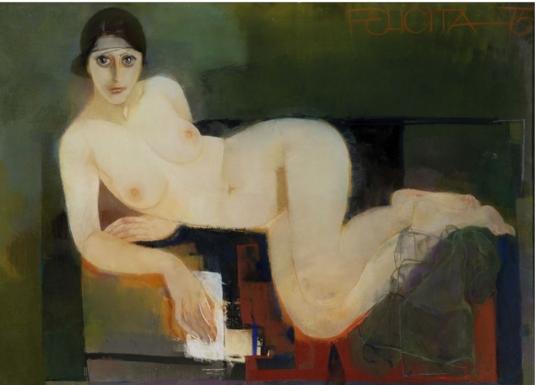Boriss Bērziņš (1930–2002). Silver / Gold
Boriss Bērziņš is one of the most visible representatives of Latvia’s cultural scene during the second half of the 20th century.
The artist was born on 7 October 1930 and commenced his studies at Jānis Rozentāls’ Riga Art High School before continuing them at the Art Academy of Latvia, from which he graduated with the diploma work Plostnieki (The Raftsmen) under the tutelage of Eduards Kalniņš. He took part in exhibitions right from his study days and was a member of the Latvian Artists’ Union from 1961.
In 1963, Boriss Bērziņš began to work at the Art Academy of Latvia as a lecturer during the evening preparatory courses and, later, in the Painting Department. After Eduards Kalniņš’ death in 1988, he assumed the leadership of the creating painting workshop of the Art Academy of the USSR in Riga, often keeping track of artistic progress of his pupils thereafter. The doors to his studio were always open for creative discussions about art, even when health problems prevented him playing an active part in the art scene. Boriss Bērziņš held a Professor’s degree at the Art Academy, as well as important awards from both Latvia and abroad. In 1979, he received 2nd prize at the 4th Cleveland International Drawing Biennale in Middlesbrough in the United Kingdom, followed by 3rd prize at the 6th Biennale in 1983.
In 1994, Boriss Bērziņš was elected as an Honorary Member of the Latvian Academy of Sciences. In 1995, he was awarded the Order of the Three Stars. From 1997, he was the holder of lifelong grant from the State Culture Capital Foundation. In the year 2000, he received the Spīdola Prize from the Latvian Culture Foundation for his lifetime’s contribution to art. Boriss Bērziņš died on 11 February 2002 and is buried at Riga’s 1st Forest Cemetery.
The artist left his works to the Latvian National Museum of Art. As a result, the rich trove that comprises his creative legacy leaves a convincing impression of the oeuvre that forms the fruit of his fecund life, in which the idiosyncrasy of his world view and artistic thinking are vividly outlined. It defines the characteristic traits of his creative output – the striving for simplicity and clarity, resolving complicated professional challenges. In the artist’s work, one can espy a powerful spark of improvisation and the ability to spot that which others are blind to; in his tireless investigations and ruminations, he invariably kept his artistic mission in mind.
Several periods are on view in the exhibition, perhaps even – signature styles, using various media – oil paintings and collages with the application of gold and silver planes, as well as drawings. The verities of art do not age, and Boriss Bērziņš is captivated by natural and worldly rituals, the rhythm of continuity with the note of eternity, the revelation of inner connections and processes, facilitated by form and a reasoned and considered idea. He is a synthesiser; a builder of a stable world, who bases his works on lengthy observations, painting that which he knows and is familiar with. Each work gives rise to new problems and their solution continues in the next work, synthesising previously discovered qualities to a new degree. One gets the impression that Boriss Bērziņš’ paintings were painted simultaneously, with issues of colour and form being resolved in each.
In rural or small town landscapes, he finds resonant and succulent combinations of colours, while through audacious and challenging brushstrokes and the materiality manifested through the texture of paint squeezed out of a tube; he knew how to show that the sun is right here on the table and that everything in the world is of equal value.
In his compositions, Boriss Bērziņš’ imagination flows profligately and colourfully; a rich palette of means of expression shimmers through figurative and witty improvisations – gold in relation to colour, unpainted canvas in relation to gold, the sensual substance of colour, or a matted surface together with gold or silver. Warm colours are placed alongside other warm colours; then a bit more, followed by black, deep black – applying coat upon coat of paint, sticking on gold or silver increasingly densely until the canvas is rendered smooth. The artist is interested in purely professional matters such as the working process and eternal constancy, which one can study long and hard.
These works clearly show that one does not necessarily require large formats to make a profound statement. It could well be that, although they leave a quite magnetic impression, greater qualities and more surprising depths can be espied in them than the artist sometimes intended. One’s attention is drawn to the rhythms of form and line and to the development of details and small sketch work, which are alluring in their own right, while their inimitability and the magic of their surprising links are captivating, sparkling with a witty effervescence. The works are given a special tonality by written notes, which clarify the characterisation and reveal the significance of this or that detail.
He painted icons for people, while his tapestries dedicated to Latvian history serve as a kind of icon for his country, people and hope. Like the sun, art is eternal and no words can fully express its allure.
Exhibition curator: Gundega Cēbere
